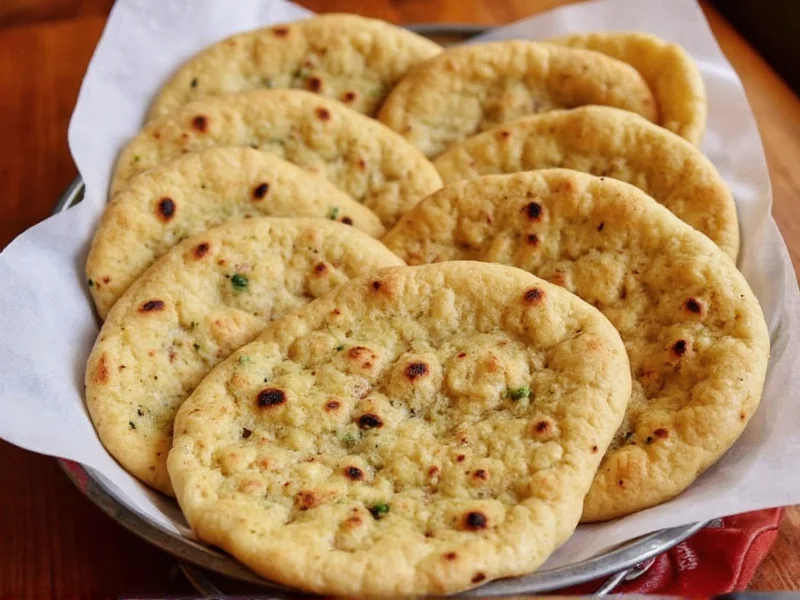Understanding Lentil Flatbread: A Nutritious Staple
Lentil flatbread has emerged as a powerhouse alternative in the world of healthy baking, combining ancient legume wisdom with modern dietary needs. Unlike conventional flatbreads that rely on wheat flour, this innovative preparation uses lentils as the primary ingredient, creating a naturally gluten-free product packed with plant-based protein and complex carbohydrates. The most common varieties utilize red lentils for their mild flavor and smooth texture when pureed, though green and brown lentils work well for heartier versions.
Nutritional Advantages Over Traditional Flatbreads
The nutritional profile of lentil flatbread significantly outperforms standard wheat-based options. Where traditional flatbread typically delivers 3-4 grams of protein per serving, lentil flatbread provides 8-10 grams while maintaining a similar calorie count of approximately 120-150 calories per piece. This high-protein flatbread alternative also contains nearly double the fiber, with 4-5 grams compared to 2-3 grams in conventional options.
| Nutrient | Lentil Flatbread (per serving) | Wheat Flatbread (per serving) |
|---|---|---|
| Calories | 130 | 150 |
| Protein | 9g | 4g |
| Fiber | 5g | 2g |
| Carbohydrates | 20g | 28g |
| Fat | 3g | 4g |
This impressive nutritional composition makes lentil flatbread particularly valuable for individuals following plant-based diets, managing blood sugar levels, or seeking sustainable energy sources. The complex carbohydrates in lentils provide steady energy release, while the high fiber content supports digestive health and promotes satiety.
Simple Homemade Lentil Flatbread Recipe
Creating authentic lentil flatbread requires minimal ingredients and basic kitchen equipment. The following recipe yields eight 6-inch flatbreads using red lentils, which cook quickly and produce a smooth texture ideal for flatbread preparation.
Ingredients for basic lentil flatbread:
- 1 cup red lentils, rinsed and soaked for 2 hours
- 1/2 cup water (adjust as needed)
- 1/4 teaspoon salt
- 1/2 teaspoon cumin powder
- 1/4 teaspoon garlic powder
- 1 tablespoon olive oil (for cooking)
Step-by-step preparation:
- Drain soaked lentils and blend with water until completely smooth, scraping down sides as needed
- Mix in spices and salt until thoroughly combined
- Let batter rest for 15 minutes to allow lentils to hydrate fully
- Heat cast-iron skillet over medium heat and lightly oil surface
- Pour 1/4 cup batter per flatbread onto hot skillet
- Cook for 2-3 minutes until bubbles form and edges lift easily
- Flip and cook another 2 minutes until golden brown
- Repeat with remaining batter, keeping cooked flatbreads warm
For best results when making lentil flatbread from scratch, ensure your lentil batter has the consistency of thick pancake batter. If too thick, add water one teaspoon at a time. If too thin, let it rest longer to thicken naturally. The ideal cooking temperature is crucial—too hot and the flatbread burns before cooking through; too cool and it becomes dense rather than developing those characteristic air pockets.
Variations for Different Dietary Needs
One of the remarkable features of lentil flatbread is its adaptability to various dietary requirements. For those seeking a completely grain-free option, replace any added starches with psyllium husk powder. To boost nutritional content, incorporate finely chopped spinach or grated zucchini directly into the batter. For Mediterranean flavor profiles, add dried oregano and a squeeze of lemon juice to the mixture.
When preparing red lentil flatbread for children or those new to legume-based breads, consider adding a small amount of honey or maple syrup to balance the earthy flavor. For enhanced texture in your vegan lentil flatbread preparation, mix in chia seeds or flaxseeds which also contribute additional omega-3 fatty acids.
Serving Suggestions and Meal Integration
Lentil flatbread serves as an excellent vehicle for numerous healthy meals. Try these serving ideas:
- As a wrap for grilled vegetables and hummus
- Cut into triangles and served with bean dip
- Used as a pizza base with tomato sauce and vegetables
- Paired with curries or stews for dipping
- Transformed into mini sandwiches with avocado and sprouts
For meal prep enthusiasts, lentil flatbread for meal prep offers significant advantages. Cook a batch on Sunday and store in an airtight container for up to five days. These flatbreads freeze exceptionally well—simply separate with parchment paper and store in a freezer bag for up to three months. When needed, thaw at room temperature for 30 minutes or warm directly from frozen in a dry skillet.
Troubleshooting Common Preparation Issues
Even experienced cooks encounter challenges with lentil flatbread preparation. If your flatbreads tear easily, the batter likely needs more resting time to allow the lentils to fully hydrate. For dense, heavy flatbreads, check that your skillet is sufficiently hot before adding batter—proper heat creates those desirable air pockets. If flatbreads stick to the pan, increase the oil slightly or ensure your skillet is properly seasoned.
Traditional lentil flatbread vs modern variations reveals interesting cultural adaptations. While Indian cuisine features lentil-based dosas, Middle Eastern cooking incorporates legumes into various bread forms. Modern interpretations often blend these traditions with contemporary dietary needs, creating hybrid recipes that honor heritage while accommodating current nutritional understanding.











 浙公网安备
33010002000092号
浙公网安备
33010002000092号 浙B2-20120091-4
浙B2-20120091-4